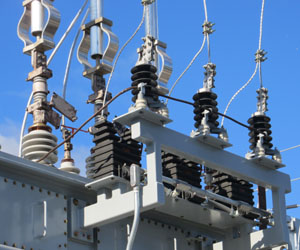


Building A Brighter Future Together

Sustainable communities are the embodiment of a vision for a more environmentally conscious, socially inclusive, and economically resilient future. They represent a proactive response to the pressing global challenges of climate change, resource depletion, and social inequality. These communities are designed with the principles of sustainability and resilience at their core, emphasizing harmonious coexistence with the environment and fostering a sense of belonging and well-being among residents.
Key Principles Of Sustainable Communities:
Environmental Sustainability: At the heart of sustainable communities is a commitment to reducing their environmental footprint. This involves adopting eco-friendly construction and infrastructure, implementing energy-efficient technologies, reducing waste, and practicing sustainable land use.
Community Engagement: Sustainable communities prioritize community engagement and participation in decision-making processes. Residents actively contribute to the development and management of their community, fostering a sense of ownership and responsibility.
Social Equity: Social equity is a key component of sustainability. Sustainable communities aim to be inclusive and equitable, promoting equal access to resources, opportunities, and services for all residents, regardless of background or socioeconomic status.
Economic Resilience: Building economic resilience is crucial. Sustainable communities often emphasize local economies, supporting small businesses and initiatives that create jobs and enhance economic stability.
Eco-Friendly Transportation: Sustainable communities prioritize alternative transportation options such as cycling, walking, and public transit to reduce dependence on fossil fuels and lower carbon emissions.
Energy Efficiency: Implementing energy-efficient technologies and renewable energy sources, such as solar panels and wind turbines, helps reduce energy consumption and dependence on non-renewable resources.
Benefits Of Sustainable Communities:
Reduced Environmental Impact: Sustainable communities actively reduce their environmental impact by promoting eco-conscious practices, reducing energy consumption, and minimizing waste.
Improved Quality Of Life: Residents of sustainable communities often report an improved quality of life, with access to green spaces, clean air, and a strong sense of community.
Resilience: Sustainable communities are better equipped to face challenges, whether they be natural disasters, economic downturns, or environmental crises. They have the structures in place to adapt and recover.
Economic Opportunities: The focus on local economies and sustainable practices can create economic opportunities, supporting businesses, jobs, and the well-being of residents.
Community Building: Sustainable communities foster strong bonds among residents, who share common values and work together toward a shared vision of sustainability.
Resource Efficiency: These communities often emphasize efficient resource use, from water conservation to responsible waste management.
Challenges And Considerations
Creating sustainable communities is not without its challenges. Balancing economic growth with environmental preservation, ensuring affordable housing, and addressing social inequalities can be complex issues. However, these challenges also present opportunities for innovation and collaboration.
Sustainable communities embody a vision for a more harmonious, resilient, and sustainable future. By adopting eco-conscious practices, engaging residents in community decision-making, and fostering social equity, these communities set an example for more responsible living in an era of environmental and social challenges. As the world faces the imperatives of climate change and resource sustainability, sustainable communities offer a path forward toward a more resilient, inclusive, and environmentally responsible way of life.
The Dynamics Of Growth And Development
 Physical Growth
Physical Growth
Physical growth is most evident during infancy and adolescence. During infancy, babies experience rapid physical growth, leading to significant weight gain and a noticeable increase in length. In adolescence, a growth spurt occurs, contributing to the dramatic changes in height and the development of secondary sexual characteristics.
Cognitive Development
Cognitive development is the process of acquiring knowledge, reasoning abilities, problem-solving skills, and language proficiency. Jean Piaget's theory of cognitive development identifies stages of development, from the sensorimotor stage in infancy to the formal operational stage in adolescence. This progression reflects the increasing complexity of thought processes and problem-solving abilities.
Emotional And Social Development
Emotional and social development is equally critical. Erik Erikson's psychosocial stages of development outline the challenges individuals face at different life stages. Emotional intelligence, the ability to recognize, understand, and manage one's own emotions, plays a vital role in social development, enabling individuals to form healthy relationships and navigate complex social situations.
Factors Influencing Growth And Development
Numerous factors influence the trajectory of growth and development, including genetics, nutrition, environmental factors, and socio-economic conditions. Genetic factors establish the baseline for an individual's growth potential, while nutrition plays a pivotal role in physical and cognitive development.


The Pursuit Of Water Efficiency
 Sustainability: As populations grow and climate change exacerbates water scarcity, efficient water use is necessary to meet the needs of current and future generations.
Sustainability: As populations grow and climate change exacerbates water scarcity, efficient water use is necessary to meet the needs of current and future generations.
Environmental Preservation: Efficient water use helps protect aquatic ecosystems, conserves habitats, and reduces the negative impacts of water extraction on nature.
Economic Benefits: By reducing water waste, businesses and industries can cut costs, enhance their resilience to water scarcity, and maintain profitability.
Strategies For Achieving Water Efficiency
Numerous strategies and technologies promote water efficiency:
Water-Saving Appliances: Low-flow toilets, high-efficiency washing machines, and water-efficient faucets help reduce domestic water use.
Smart Irrigation: Advanced irrigation systems equipped with sensors and weather data can optimize watering schedules, reducing water waste in agriculture and landscaping.
Leak Detection: Identifying and repairing leaks in water supply systems is a crucial step in preventing water loss.
Wastewater Treatment And Reuse: Treating and reusing wastewater for non-potable purposes like irrigation or industrial processes conserves freshwater resources.
Public Awareness: Educational campaigns and policies can encourage responsible water use among individuals and communities.
Positive Impacts Of Water Efficiency
Efficient water use offers a range of positive impacts:
Conserving Water Resources: By minimizing water waste, we ensure that enough freshwater is available for essential needs, even during periods of scarcity.
Reducing Energy Consumption: Water and energy are intrinsically linked. Water efficiency helps reduce the energy required for water treatment and transportation.
Protecting Ecosystems: Efficient water use reduces the diversion of water from natural habitats, preserving aquatic ecosystems and their biodiversity.
Ensuring Safe And Sustainable Water Supply
 Rainwater is naturally soft and low in mineral content, making it an appealing alternative water source. In areas where access to clean, safe drinking water is limited, treating rainwater can provide a reliable supply. Additionally, rainwater treatment supports sustainable water management practices by reducing the burden on traditional water sources.
Rainwater is naturally soft and low in mineral content, making it an appealing alternative water source. In areas where access to clean, safe drinking water is limited, treating rainwater can provide a reliable supply. Additionally, rainwater treatment supports sustainable water management practices by reducing the burden on traditional water sources.
The Rainwater Treatment Process
Filtration: The first step in rainwater treatment is filtration. This process involves the removal of physical impurities such as leaves, twigs, and debris. Mesh screens and sediment filters are commonly used for this purpose.
Storage: Rainwater is often collected in storage tanks or cisterns. Proper storage is essential to prevent the growth of algae and the contamination of the water by external factors.
Settling: Allowing the collected rainwater to settle can help separate fine particles and sediments that may have passed through the filtration process. This is especially important for improving water quality.
Chemical Treatment: To disinfect rainwater and eliminate pathogens, chemical treatments are employed. Chlorine or ultraviolet (UV) light can effectively kill bacteria and viruses, ensuring safe water for drinking and household use.
Carbon Filtration: Activated carbon filters can be used to remove organic compounds, odors, and residual chemicals from rainwater, enhancing its taste and quality.
Reverse Osmosis: For potable water, reverse osmosis systems can be used to further purify rainwater by removing dissolved minerals, heavy metals, and other contaminants.
Applications Of Treated Rainwater
Drinking Water: When appropriately treated, rainwater can be a safe and reliable source of drinking water in areas with limited access to clean water.
A Brighter, Greener Future
 Cost Savings: For individuals and businesses, energy efficiency translates to lower energy bills. By reducing waste and optimizing energy consumption, you can significantly cut your energy costs.
Cost Savings: For individuals and businesses, energy efficiency translates to lower energy bills. By reducing waste and optimizing energy consumption, you can significantly cut your energy costs.
The Benefits Of Energy Efficiency
Lower Energy Bills: Improved energy efficiency translates directly into lower energy bills for households and reduced operational costs for businesses. This means more money in your pocket and increased competitiveness for companies.
Environmental Conservation: Reduced energy consumption leads to lower emissions of greenhouse gases, making a substantial contribution to environmental preservation and combating climate change.
Energy Independence: Energy efficiency, when combined with renewable energy sources like solar and wind power, can lead to greater energy independence. Less reliance on non-renewable resources means more stability and control over your energy supply.
Simplifying Life In The Modern World
 Defining Convenience Solutions
Defining Convenience Solutions
Convenience solutions are innovations that aim to eliminate or reduce the hassles and inconveniences we encounter in our everyday lives. They encompass a broad spectrum of offerings, from mobile apps and smart devices to delivery services and automation technologies. The overarching goal is to enhance our overall quality of life by minimizing the effort required to accomplish various tasks.
Home Automation
One of the most prominent categories within convenience solutions is home automation. Smart devices and systems are designed to control and manage various aspects of daily living. This includes intelligent thermostats that optimize heating and cooling, smart locks that enhance security, and voice-activated virtual assistants that can answer questions and perform tasks with simple commands. Home automation makes daily life more comfortable and efficient.
Meal Delivery Services
Convenience solutions have revolutionized meal preparation. Meal delivery services, such as Blue Apron, HelloFresh, and DoorDash, provide ready-to-cook meal kits and restaurant food delivered right to your doorstep. These services save time, reduce the need for grocery shopping, and offer a variety of dining options without leaving the comfort of your home.
Mobile Banking And Payments
Convenience solutions extend to the financial realm as well. Mobile banking apps and contactless payment methods enable quick and secure transactions. From checking balances to making payments and transferring funds, these technologies make managing your finances more efficient and accessible.
Shaping A Sustainable Future
 Energy Efficiency: Energy-efficient design is a central aspect of eco-friendly design. This involves creating structures and products that require less energy to operate, thus reducing greenhouse gas emissions and energy costs.
Energy Efficiency: Energy-efficient design is a central aspect of eco-friendly design. This involves creating structures and products that require less energy to operate, thus reducing greenhouse gas emissions and energy costs.
Sustainable Materials: The use of eco-friendly materials, such as reclaimed wood, recycled metals, and low-VOC (volatile organic compounds) paints, is a cornerstone of eco-friendly design. These materials have lower environmental impacts and contribute to healthier indoor air quality.
Waste Reduction: Eco-friendly design encourages the reduction of waste at all stages, from manufacturing and construction to product use and disposal. This can include designing for disassembly and recycling.
Biomimicry: Biomimicry is a concept in eco-friendly design where designers draw inspiration from nature's solutions to complex problems. By imitating nature's strategies, designers can create more sustainable and efficient products and buildings.
Energy-Efficient Appliances and Systems: In architecture and interior design, eco-friendly design often incorporates energy-efficient appliances, lighting, and heating, ventilation, and air conditioning (HVAC) systems.
Water Efficiency: Eco-friendly design includes water-saving features such as low-flow faucets, dual-flush toilets, and rainwater harvesting systems. These measures reduce water consumption and promote water conservation.
Adaptive Reuse: In architecture and interior design, adaptive reuse is a strategy that involves repurposing existing buildings or structures rather than demolishing and building anew. This reduces waste and preserves historical and cultural significance.
 Energy Efficiency: Sustainable cleaning practices also involve energy-efficient cleaning appliances. This means reduced energy consumption, which is not only cost-effective but also better for the planet.
Energy Efficiency: Sustainable cleaning practices also involve energy-efficient cleaning appliances. This means reduced energy consumption, which is not only cost-effective but also better for the planet.
Effective Sustainable Cleaning Solutions
Eco-Friendly Cleaning Products: Look for cleaning products with eco-friendly certifications such as the "EcoLogo" or "Green Seal." These products are verified to meet environmental and health standards.
Homemade Cleaning Solutions: You can make your own sustainable cleaning solutions using readily available ingredients like vinegar, baking soda, lemon juice, and essential oils. These natural ingredients are effective for various cleaning tasks and are safe for your family and the environment.
Refillable Containers: Opt for cleaning products that come in refillable containers, reducing the need for single-use plastic bottles that contribute to environmental pollution.
Reusable Cleaning Tools: Invest in reusable cleaning tools such as microfiber cloths and mop heads. These tools effectively capture dirt and dust, reducing the need for disposable cleaning supplies.
Water Conservation: Sustainable cleaning also involves water conservation. Be mindful of the amount of water you use during cleaning, and consider water-saving practices like using a bucket for mopping instead of running water.
The Benefits Of Sustainable Cleaning Solutions
Healthier Indoor Air Quality: Sustainable cleaning solutions do not release harmful volatile organic compounds (VOCs) into the air, leading to cleaner and healthier indoor air. This is particularly important for individuals with respiratory issues or allergies.